Home » Home Decor » How to Get Rid of Bathroom Mould (And Keep It That Way)
In This Post
– Common causes
– Tips on how to spot it?
– Can it make you fall sick?
– How to get rid of bathroom mould?
– Preventing mould infestation
Bathrooms are a natural breeding ground for mould in any household. So, if you are looking for ways to get rid of mould in your shower, bathtub or the entire bathroom, it’s nothing to be ashamed of. Sometimes mistaken for mildew, mould is a fungal growth that usually forms in dark and damp places with little to no ventilation. Leaky pipes and condensation make the matter even worse.
Since bathrooms are typically the most humid rooms in a home and are usually windowless, they provide the perfect conditions for mould to grow. Even if you can’t spot it with the naked eye, there’s a good chance that the fungal spores are quietly growing on your bathroom ceiling, underneath the wallpaper, on the walls, in tile grout, in shower or bathtub, bathroom sink, wooden shelves, and even toilets.
Unfortunately, detecting mould infestation in bathrooms, or anywhere else in the house for that matter, at an early stage is usually quite difficult. This is because these fungal spores grow in dark, damp corners that usually go unnoticed.
However, since mould infestation can severely impact your health and cause respiratory problems along with making your bathroom look unhygienic and frankly, disgusting, here are a few budget-friendly tips on how to get rid of mould in your house with DIY homemade cleaners.
Before we discuss how to get rid of mould in your bathroom, let’s take a look at what makes for the perfect condition for mould infestation in any home along with tips on how to spot it, if these spores can make you sick and how to prevent mould from infesting your space again.
Common Causes of Bathroom Mould
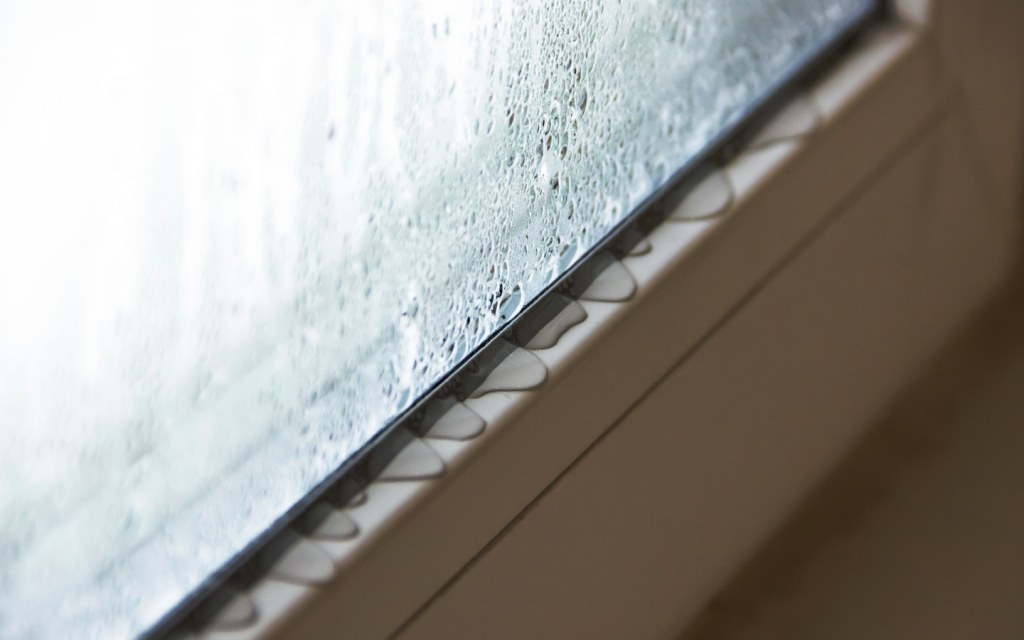
Mould can literally grow anywhere. Be it tiles, paint, wallpaper, carpet, wood, or any other flooring or building material, excess moisture and lack of ventilation can lead to infestation quite easily. Since bathrooms, especially showers, toilets and bathtubs, are usually the dampest places in any home, you can almost always expect mould to be growing between the tiles, under the caulk, around the tap and other fixtures. It can even grow on windows, beneath or behind closets, under the sink, doors frames and other areas of the room. Leaking pipes can also create a serious mould problem that can hectic to deal with.
Therefore, if you are suspecting any plumbing leaks that might lead to permanent water damage or if your bathroom is always damp, you need to be on a lookout for any signs of the infestation.
If you want to get rid of mould in your bathroom, you first need to learn about the conditions it needs to grow.
- Moisture
- Darkness
- Warmth
- Oxygen
Remember, mould can contaminate your bathroom and other areas within 24 to 48 hours. So, just because it wasn’t there until a week ago, doesn’t mean it can’t grow that moist, dark corner of your home that doesn’t receive any sunlight or fresh air.
Tips on How to Spot Mould in Your Bathroom?

In order to spot mould in your bathroom, you first need to know what it looks like.
Typically, mould has a fuzzy appearance and looks like an irregular cluster of green or black spots. If you notice spots of any other colours besides these, such as blue, grey, yellow, brown or white, it’s still going to be some other form of fungus. However, mould is usually one of the most common and peskiest problems homeowners have to deal with.
Here are a few ways you can spot mould in your bathroom.
- Allergic reaction, respiratory issues, skin irritation are common signs of a mould infestation in a home. If you notice your nasal congestion, cold, flu or asthma getting worse only when you’re home, you likely have mould spores to blame for it.
- Mould has an unpleasant musty odour. For the sake of comparison, it smells like wet laundry that hasn’t been dried for days or rotten wood. This is often the first clue that you might be dealing with an infestation and need to get rid of mould.
- Check for areas under the sink, around the faucets and taps, inside the shower and bathtub and between the tiles on your bathroom walls and floors. More often than not, people mistake early stages of mould development for dirt. While wiping it off can make the surface look visibly clean, it doesn’t really solve the problem.
- If you are dealing with water damage or flooding, you can pretty much guarantee mould growth under the surface of your walls and floors.
- Flaky paint, peeling wallpaper, bowing and warped walls, as well as other surface abnormalities, can also be indicators of mould growth in a home.
Small mould patches, especially on places like ceilings and walls, can multiply in a matter of days until they are too difficult to tackle all by yourself. Therefore, it’s better to take care of the problem and get rid of mould in your bathroom before it spreads further.
Can Mould Infestation Make You Fall Sick?
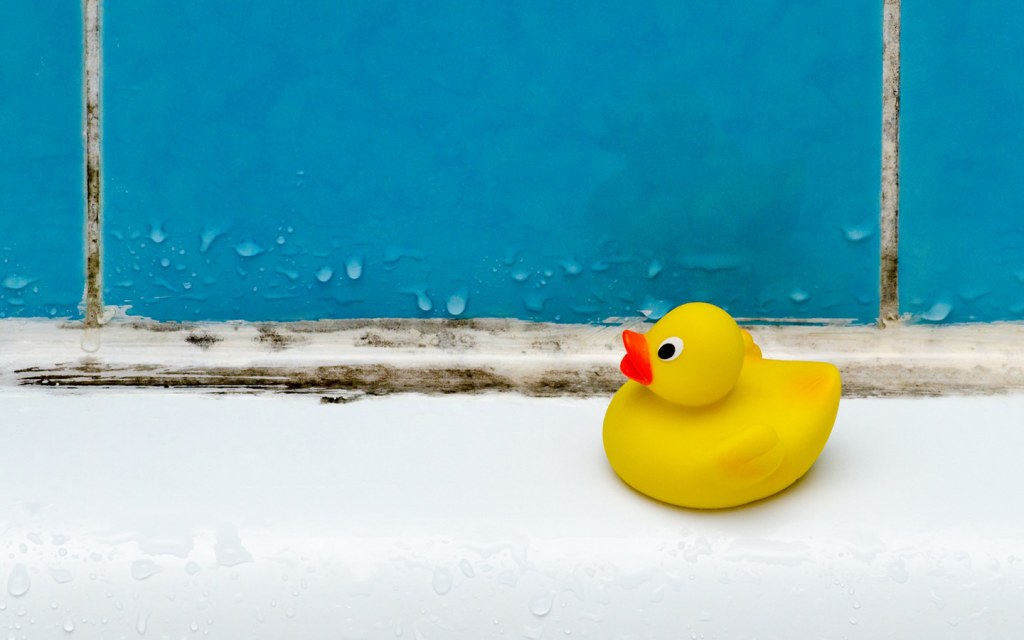
Exposure to mould can have adverse effects on your health. As it grows and spreads to a larger area, mould releases Microbial Volatile Organic Compounds, which is harmful to all those living inside a home.
Some common health problems caused by mould growth include:
- Respiratory issues
- Chronic fatigue
- Headaches
- Nausea
- Asthma
- Runny nose
- Cough and flu-like symptoms
- Skin irritation
- Itchy eyes
- Swollen eyelids
- Nose bleeds
For further information on the topic, take a look at our guide on easy ways to allergy-proof your home.
DIY Ways to Get Rid of Mould in Your Bathroom
These are some of the easiest ways to get rid of mould in your bathroom and other parts of the house without having to buy expensive chemical cleaners available in stores.
Using Vinegar to Kill Mould
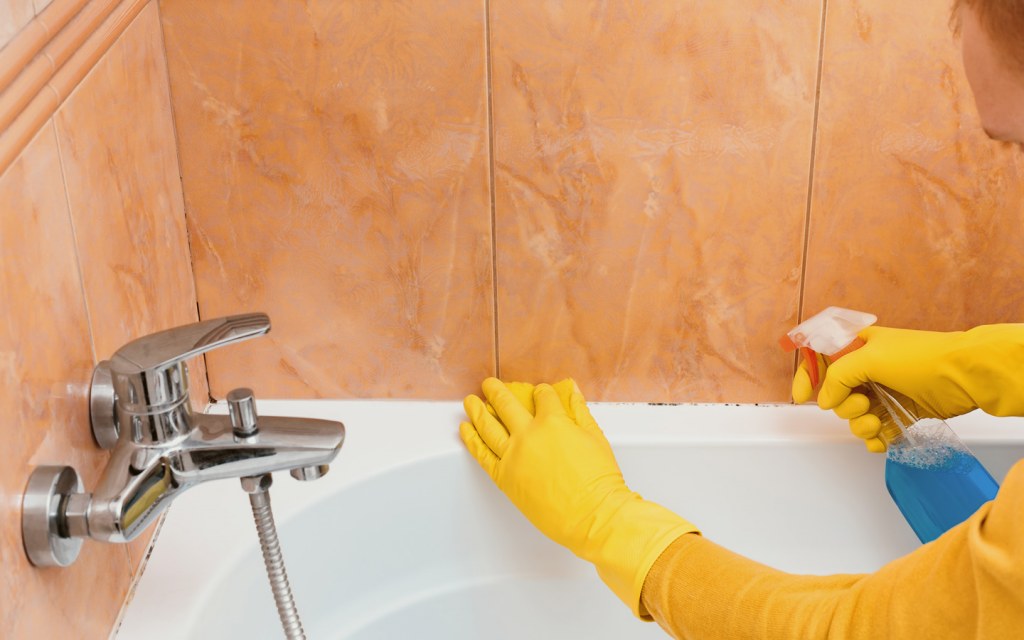
Vinegar is perhaps the best homemade mould cleaner you can find out there. Not only does it have the ability to kill mould, but vinegar can also keep it from coming back and reclaiming your bathroom. Moreover, unlike bleach and other cleaning agents, vinegar doesn’t have any toxic fumes.
Here is how you can use this household product to get rid of mould:
- Pour white vinegar into a spray bottle. Do not add any water as it would only further dilute the acetic acid in the liquid.
- Spray the areas affected by mould growth
- If there are any windows in the bathroom, open them for ventilation
- After an hour, use a towel and hot water to wipe off the surface.
- Repeat this process every other week to ensure the mould doesn’t return.
This tip works best for tiled walls and floors. Also, if you wish to remove mould from caulk naturally, this might be your best option.
Moreover, you can check out other uses of white vinegar in our handy guide on the topic.
Using Baking Soda to Kill Mould
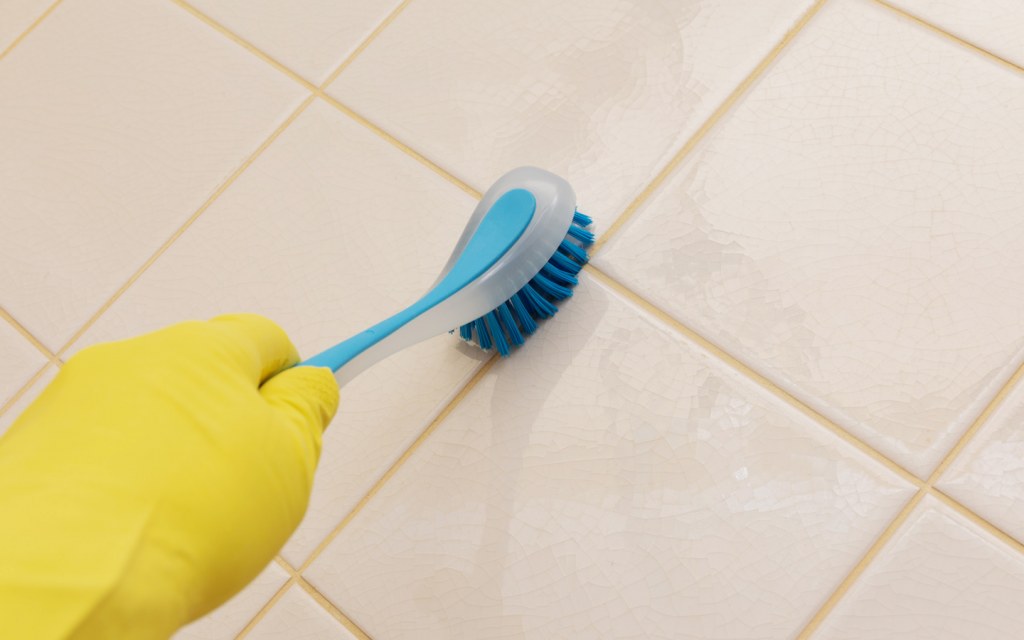
Even after you remove mould from the grout, walls, shower, toilet, sink and other parts of your bathroom, there is still a good chance you can see green and black spots dotting the surface. These are called mould stains. If not taken care of in a timely manner, they can make your bathroom look dirty all the time.
Baking soda not only helps you get rid of mould but also erases the stains that are left behind.
This is how you can use baking soda to kill mould in bathroom
- Pour a cup of water into a spray bottle and add half tsp of baking soda. Shake the solution until the baking soda is completely dissolved.
- Spray the affected areas with the solution. Wait for an hour and spray it again.
- In another cup, add one teaspoon of liquid soap and a few drops of essential oil into a cup of baking soda.
- Mix it with warm water to create a thick paste.
- Apply the paste on the mouldy areas and use a brush to scrub off the fuzzy spots.
- Rinse the area with warm water
This DIY homemade cleaner works best for cleaning mould from walls, caulks, grout and floor tiles.
Using Borax to Kill Mould

Borax powder is also a good cleaning agent if you are looking to get rid of mould using household products. It is especially great for painted walls since it won’t require any scrubbing or rinsing which might ruin the surface or cause discolouration.
Let’s take a look at how borax can be used to get rid of bathroom mould:
- Add two tablespoons of borax in one-fourth cup of white vinegar. Add two cups of hot water into the solution and transfer it into a spray bottle.
- Spray the mould patches on painted walls
- Let it sit for 15 minutes and then wipe the area clean with a piece of towel
- Repeat the process once or twice until the mould is eradicated.
How to Prevent Mould from Forming Again
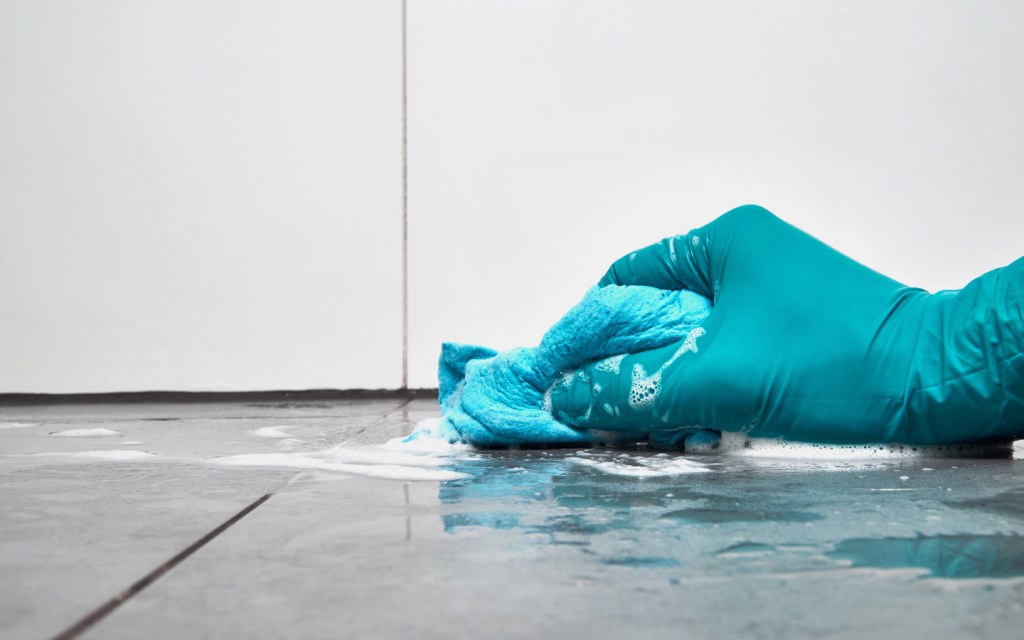
The DIY tips on getting rid of mould in the bathroom might be effective, but they are not a permanent solution to the problem.
Check out some of the steps you can take to reduce the threat of mould infestation.
- Make sure your bathroom is properly ventilated.
- If the room does not have a window, install a fan and turn it on for 30 minutes or so after every shower so that your bathroom is completely dried.
- Use mildew-resistant paint
- Spray the bathroom tiles, grout and fixtures with vinegar to keep mould from growing
- Wash your shower mats, towels and shower curtain regularly
- Do not leave damp laundry in the bathroom
- If you suspect a plumbing leak, fix it immediately
Moreover, here’s a house deep cleaning checklist that will definitely help you keep your space free of mould and any other types of infestations.
Since this problem tends to get worse during the rainy season, you should also take a look at how to prevent mould infestation in monsoon.
For DIY home cleaning tips and to learn more about mould treatment for bathrooms, stay connected to Zameen Blog – the best home improvement and property blog in Pakistan. For questions and feedback, get in touch with us on blog@zameen.com. Furthermore, subscribe to our newsletter to receive the latest updates about lifestyle, construction and real estate trends in the country.



